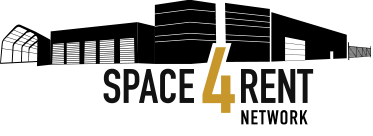Sign in
By creating a member account and using this site you agree to our Terms of Use. This site is protected by reCAPTCHA and the Google Privacy Policy and Terms of Service apply.
Facts and Figures
Canada's second-largest city and the capital of the province of Quebec is Montreal. It is located 196 km east of Ottawa and 258 km southwest of Quebec City, the provincial capital. As of 2016, the population of the city was 1,704,694
Reasons to invest in Montreal, Quebec [1]:
There are a couple of reasons to invest in Canada:
Strategically located:
The Greater Montréal region is a regional hub for international transportation (air, maritime, road, and rail). Companies in the region have easy access to markets in more than 50 countries, home to nearly 1.5 billion consumers. It has the second largest port in Canada handling 39 million tonnes of cargo (2019). It is the center of the U.S., Canada, and Mexico rail networks.
Advantageous cost:
In Greater Montréal, the average cost of operating your business is lower than in any other large metropolitan area in Canada and the United States, even after accounting for very attractive incentives. It offers up to 43 percent in sectoral tax credits and has electricity rates as low as 3.98*CAD/kWh for large electricity customers
Hub of major heavy industry clusters:
The city is the hub of major aerospace, aluminum, oil, and logistics, and transportation manufacturers.
Locations reserved for industries:
The city of Montreal is further divided into 19 boroughs with each borough having its zoning by-law. The city is the hub of major oil refining companies in Canada like Petro-Canada, Ultramar, Petromont, Gulf Oil, Ashland Canada, Coastal Petrochemical, Parachem Petrochemical, Nova Chemicals, Interquisa (Cepsa) Petrochemical, and many more located in Montreal Est. The boroughs of Saint-Laurent, Anjou, and Ahuntsic-Cartierville. Most of the industrial lands are located in Saint Laurent. Saint Laurent is further divided into six industrial zones: Research and development (i1), Wholesale trade (i2), Manufacturing (i3), Transport and construction (i4), Chemicals and petroleum products (i5), and Primary and recovery (i6). Heavy industries are only permitted in zone i3, i4, and i5. Warehousing and contractors' yards are designated with zone i4. The majority of the heavy industries are located along Trans-Canada Highway starting from Cavendish Boulevard exit till Alfred Nobel Boulevard.
Areas with Heavy industries
Starting from Montreal East, you will find most of the oil companies along Marien Avenue. In a nearby area, metal fabricator Affinerie CCR is located on Rue Victoria. Along route 138, starting from Broadway Avenue there are series of oil refining plants and hazardous chemical producers. Down the road, you will also find Lafarge Canada. Along with Boul Henri-Bourassa E, you will find the majority of construction/contractor yards. In Saint-Laurent area, there are numerous manufacturing yards on Côte-de-Liesse Expy., Lebeau Boulevard, De L’Acadie Boulevard, and Henri-Bourassa Blvd. Salvage yards can be found on Rue Farway, Rue Hickmore, Chem. de la Côte-de-Liesse, and Blvd. Marcel-Laurin. Several warehouses exist on Rue Douglas B Floreani.
Major heavy industry employers
Major heavy industry employers in the city are [3]:
Inventex Inc
Bombardier
Suncor Energie
Lafarge
Affinerie CCR
References
[1] https://www.montrealinternational.com/en/invest/why-choose-montreal/
[2] https://montreal.ca/en/boroughs
[3] http://www.companylisting.ca/QC/montreal/all/default.aspx?d=loc







